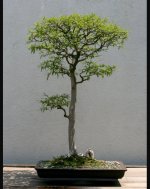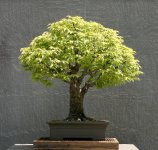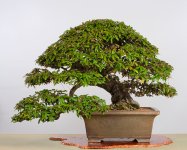metro_bonsai
Seedling
- Messages
- 20
- Reaction score
- 2
Hi,
I'm new to bonsai but I have a few baldcypress seedlings, as well as Metasequoia, all collected seedlings sprouted in Spring 2025.
I recently saw this comment on an Instagram post and I think I agree with it, but I am not exactly sure if I buy this arboretum employee's opinion on the effects of poaching on the aethetics of the tree.
"Dug, chopped, and shipped baldcypress are a fascinating trend in American bonsai culture. Sure it's a living statue, but imagine how a poached specimen will fare in a collection long-term... Unlikely attaining as a bonsai the embodiment in visible distress and age a state of nature subject to human fancy. In contrast, crude poaching scars inscribed subsequent growth with arrested development so that-- as form describes a sculpture-- these baldcypress are living testaments to the petty cruelties of ignorant and unfeeling artistry. I don't blame American bonsai, per se, but, as the community grows, it's increasingly clear how too few apprentice in Japan today & honor their cultural practices..."
Any thoughts on this? Does this mean that I should not be moving a baldcypress from a larger pot to a smaller pot without branches or limbs dying?
Thanks,
-fmb
I'm new to bonsai but I have a few baldcypress seedlings, as well as Metasequoia, all collected seedlings sprouted in Spring 2025.
I recently saw this comment on an Instagram post and I think I agree with it, but I am not exactly sure if I buy this arboretum employee's opinion on the effects of poaching on the aethetics of the tree.
"Dug, chopped, and shipped baldcypress are a fascinating trend in American bonsai culture. Sure it's a living statue, but imagine how a poached specimen will fare in a collection long-term... Unlikely attaining as a bonsai the embodiment in visible distress and age a state of nature subject to human fancy. In contrast, crude poaching scars inscribed subsequent growth with arrested development so that-- as form describes a sculpture-- these baldcypress are living testaments to the petty cruelties of ignorant and unfeeling artistry. I don't blame American bonsai, per se, but, as the community grows, it's increasingly clear how too few apprentice in Japan today & honor their cultural practices..."
Any thoughts on this? Does this mean that I should not be moving a baldcypress from a larger pot to a smaller pot without branches or limbs dying?
Thanks,
-fmb






